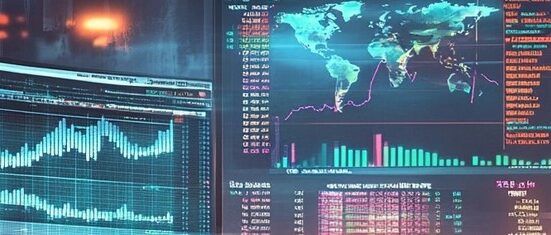Understanding Leverage in Forex Trading

Leverage in forex trading is a powerful financial tool that allows traders to increase their market exposure by using borrowed funds. In the forex market, leverage is expressed as a ratio, such as 50:1, 100:1, or even 500:1. This means for every dollar in the trading account, a trader can control a position worth fifty, one hundred, or five hundred dollars. Essentially, leverage enables traders to make large trades with a relatively small amount of capital.
Key Concepts:
- Margin: The initial deposit required to open a leveraged position.
- Margin Call: A broker’s demand for additional funds if the market moves against a trader’s position.
- Free Margin: The amount of equity in a trading account that is not tied up in current trades and is available to open new positions.
Leverage can significantly amplify both gains and losses. Therefore, understanding how leverage works is crucial for managing risk in forex trading.
How Leverage Amplifies Forex Profits

Leverage can magnify returns, making it an attractive option for forex traders who have limited capital but are eager to capitalize on market movements.
Example:
- Without Leverage: If a trader invests $1,000 in a currency pair that moves 1% in their favor, the profit would be $10.
- With 100:1 Leverage: The same $1,000 controls a $100,000 position. A 1% movement would result in a profit of $1,000.
Benefits of Leverage:
- Enables traders to enter larger trades than they could otherwise afford.
- Enhances the potential returns on investment.
- Allows for a diversified trading strategy with limited capital.
However, while leverage can significantly increase profits, it also opens the door to substantial losses.
The Risks of Using Leverage in Forex

The same mechanism that amplifies profits can also magnify losses, making leverage a double-edged sword.
Potential Risks:
- Increased Losses: Just as profits are magnified, so are losses. A small adverse market movement can result in significant losses.
- Margin Calls and Liquidation: If the market moves against a trader significantly, their account may be subject to a margin call, potentially leading to forced liquidation of positions.
- Psychological Pressure: High leverage can lead to increased stress and rash decision-making due to the potential for large, rapid losses.
Risk Mitigation Tips:
- Use stop-loss orders to limit potential losses.
- Avoid using maximum available leverage; instead, choose a level that aligns with your risk tolerance.
- Regularly monitor positions and account balance to avoid margin calls.
Calculating Leverage: A Step-by-Step Guide

Calculating leverage in forex trading involves understanding the relationship between your equity and the total position size.
Steps to Calculate Leverage:
- Determine the Total Position Size: This is the size of the trade you want to open.
- Identify Your Account Equity: This is the total capital available in your trading account.
- Calculate Leverage Ratio: Divide the total position size by the account equity.
Example:
- Account Equity: $5,000
- Total Position Size: $100,000
- Leverage Ratio: $100,000 / $5,000 = 20:1
This means the trader is using a leverage of 20:1.
Choosing the Right Leverage for Your Strategy

Selecting the appropriate leverage level is crucial for aligning your trading strategy with your risk tolerance and market conditions.
Considerations for Choosing Leverage:
- Trading Style: Day traders may use higher leverage due to short-term positions, while swing traders might opt for lower leverage.
- Risk Tolerance: Conservative traders may prefer lower leverage to minimize potential losses.
- Market Volatility: In highly volatile markets, lower leverage can help manage risk exposure.
Practical Tips:
- Start with lower leverage if you are new to forex trading.
- Gradually increase leverage as you gain experience and confidence.
- Regularly reassess your leverage usage based on changes in market conditions and personal financial circumstances.
Regulations Governing Leverage in Forex Markets

Regulatory bodies set rules to protect traders from excessive risk exposure associated with high leverage.
Key Regulations:
- United States: The Commodity Futures Trading Commission (CFTC) limits leverage to 50:1 for major currency pairs and 20:1 for others.
- European Union: The European Securities and Markets Authority (ESMA) restricts leverage to 30:1 for major pairs and 20:1 for non-major pairs.
- Australia: The Australian Securities and Investments Commission (ASIC) caps leverage at 30:1 for retail clients.
These regulations aim to mitigate systemic risk and promote responsible trading practices. Understanding these rules is essential for traders operating in different jurisdictions, ensuring compliance and informed decision-making.
In conclusion, leverage in forex trading offers the potential for increased profits but comes with significant risks. By understanding leverage, calculating it accurately, and adhering to regulatory guidelines, traders can effectively incorporate it into their strategies while managing associated risks.








Leave feedback about this